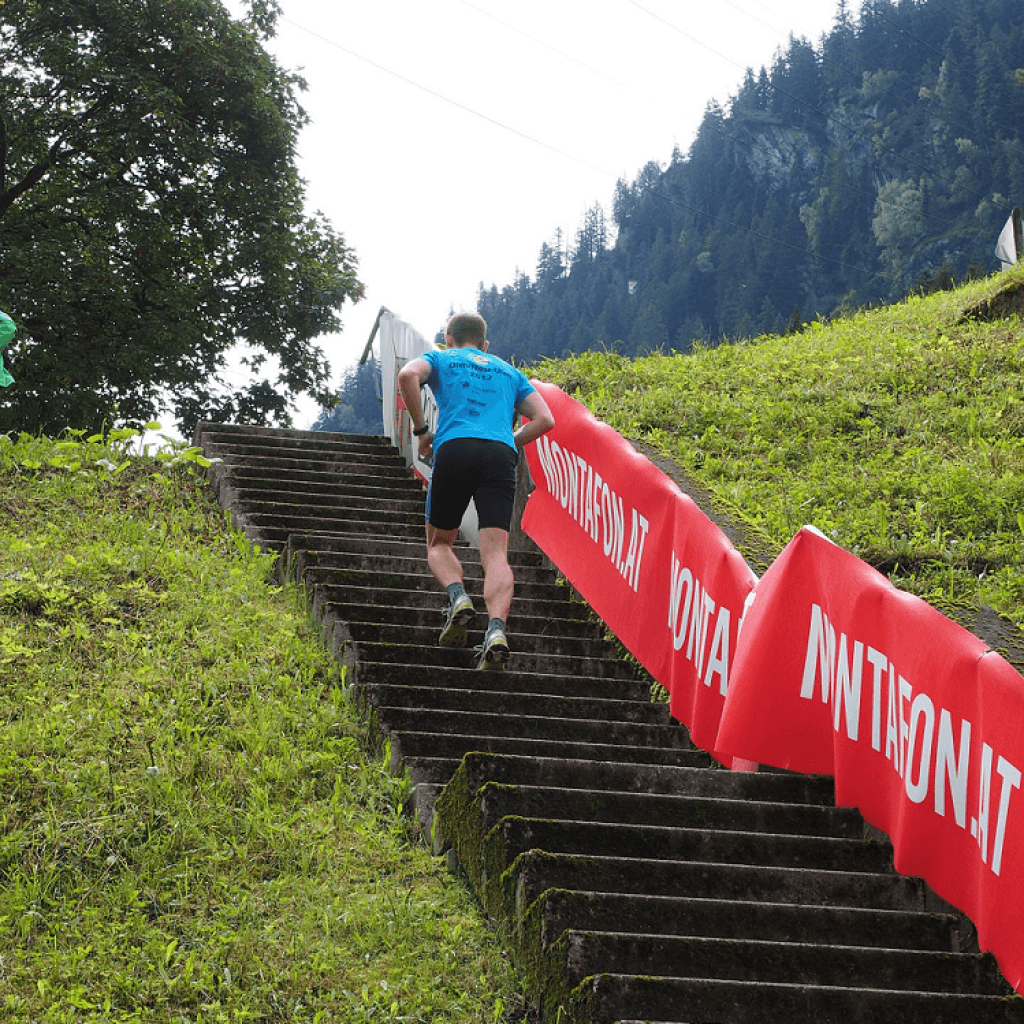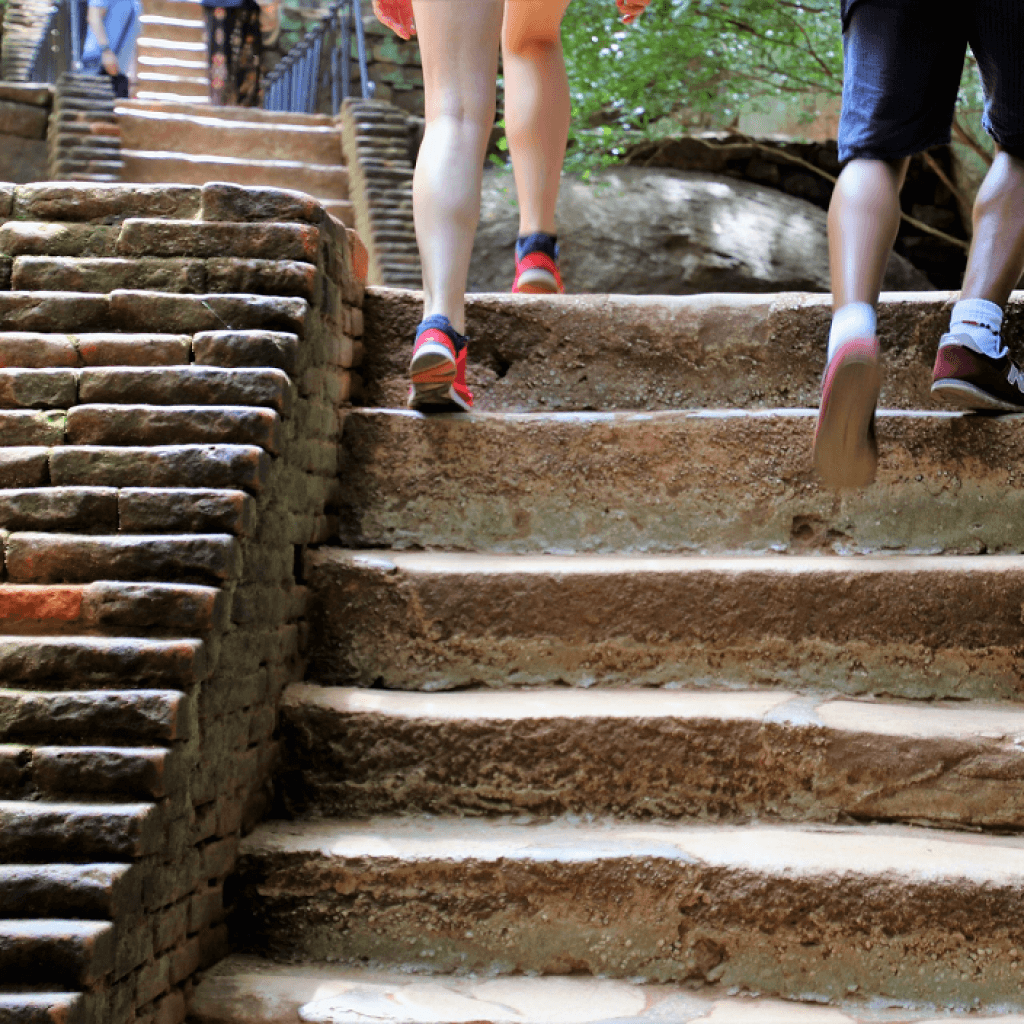The Benefits of Stair Running for Runners

Dreaded by all and shunned by most, stair running is certainly not for the faint-hearted. Guaranteed to get your heart racing and quads burning in two minutes flat, stairs have a way of bringing even the super fit to their proverbial knees. But is it worth it? Are the proven benefits of stair running really worth the torture? Let’s find out.

The Physiological Benefits of Running Stairs
While it only seems logical that stair running will make you stronger, what exactly are the physiological benefits that you can expect from regularly running up and down stairs? Here are but a few:
- An increased VO2max. A small study published in the British Journal of Sports Medicine in 2005 concluded that short bouts of daily stair climbing increased the VO2max of young, sedentary females by 17.1% over an 8-week period. And why is this important? Because an increased VO2max (or the maximum amount of oxygen that can be utilized during intense exercise) allows runners to run harder for longer.
- A potential reduction in LDL cholesterol. The same study also found a 7.7% reduction in LDL (or “bad”) cholesterol in study participants over the course of the study period. (Keep in mind that this study focused on sedentary individuals, not consistent runners.)
- Stronger muscles. The plyometric nature of stair running strengthens the major muscle groups of the legs in the same way that lunges and squats would. Which may, in turn, make you a faster runner. “Stronger muscles are more powerful muscles, and running speed is all about power”, says Colin Boreham, Ph.D, director of the Institute for Sport and Health at University College, Dublin.
- Activation of neglected muscles. Stair running forces you to use stabilizing muscles, like the gluteus medius, that often gets neglected during “normal” running. Strengthening these neglected stabilizers may, in turn, reduce your risk of injury.

Case in Point
Not convinced yet? Perhaps the story of Suzy Walsham will change your mind. Walsham, now aged 44, entered and won her first “vertical marathon” in 2006. Vertical what, you ask? While this form of running doesn’t physically cover 26.2 miles, it requires participants to sprint up the staircases of the world’s tallest buildings. Sounds painful, right?

But have a look at Walsham’s “normal” running stats. A year ago, the fourty-something year-old clocked an impressive 17:05 for the 5K and 36:39 for the 10K. And she believes that she has stair running to thank for these impressive times. “Tower running has improved the strength and power in my legs, and I think mentally I am stronger, too, because tower running events are so tough”, she says. And yes, she adds with a smile that “normal” running feels a lot easier after scrambling up towers.
How to Incorporate Stair Running into Your Training Regime
The good news is that even short stair workouts can be extremely effective, making it ideal for busy runners who are pressed for time. According to Walsham, a decent stair workout can be completed in 30 minutes or less. But what should you do in these 30 minutes?
One for the Beasts
The following workout is one of Walsham’s staples. “If I can do this session I know I am in good shape”, she says. And it’s pretty simple too:
- Warm-up: Run easy for 10 minutes on a relatively flat surface.
- Workout: Ten sets of 30 floors of stair running, with 3 – 4 minutes of recovery between each set. (Walsham uses the recovery time to take the elevator back to ground level.)
- Cool-down: Walk down the stairs to cool down after the final set of stair running.
And while this may look easy enough in writing, be assured that it’s a killer. Walsham therefore recommends easing into it. “If you go out too hard, you’ll blow up. It’s quite different from running on the road, so understand that things get very tough, very quickly, as a lot of lactic acid builds up”, she warns. So instead of tackling this workout head-on from Day 1, Walsham suggests starting off by slowly jogging up 10 floors and then taking a short break before tackling ten more. As your fitness and strength improves, gradually add more floors or reduce the resting time in between floors until you can complete the entire workout.

And, once you’ve mastered the workout in its entirety, Walsham recommends taking the stairs two by two to add an extra element of strength training.
Something a Little Gentler
But if this sounds a little too hard core for you, why not try the following variation?
- Warm-up: 10 minutes of easy running on a level surface.
- Workout: Run hard up a flight of stairs for 20 to 30 seconds, then walk back down. Repeat for 20 to 30 minutes.
- Cool-down: Slowly walk down the last flight of stairs and continue walking for 5 to 10 minutes.
It goes without saying, of course, that every, single run that you do shouldn’t be a stair run. Give your body enough time to properly rest and recover in between tough workouts, and best save your stair runs for once or twice a week.
Something for the Distance Junkies
And if you’re not keen on devoting an entire workout to stair running each week, why not add 10 minutes of stair running to the back-end of a longer training run? Simply finish your run, find some stairs, run as fast as you can to the top, and recover by walking down to the bottom. Repeat for five to ten minutes and be warned that this will feel like the longest ten minutes of your life! But, by doing this workout you’ll not only build endurance, but you’ll teach the body to push through fatigue too.
Ready to Start Reaping Some Rewards?
Are you ready to start reaping some performance rewards? Then gradually and sensibly start incorporating regular stair running into your existing routine. Be sure to ease into it, and always give your body enough time to recover from a tough session before heading into the next one. You’ll be very glad you did!
Sources
- , Why stair-climbing is good for runners, Online publication
- , The hardest workout you're not doing, Online publication
- , Here Are The Benefits Of Doing A Stair Workout, Online publication
- , Start Doing This Stair Workout After Your Runs, Online publication
- , Elevate Your Run Performance By Taking The Stairs Read more at http://running.competitor.com/2018/01/training/elevate-run-performance-taking-stairs_169493#d8KziPvtfIfzZULO.99, Online publication
- , Training effects of short bouts of stair climbing on cardiorespiratory fitness, blood lipids, and homocysteine in sedentary young women, Scientific journal
Latest Articles
 Is Running on a Treadmill Easier Than Running Outside?Runners have their own preferences, whether it is treadmill running, running outside on the road, or exploring trails. So...
Is Running on a Treadmill Easier Than Running Outside?Runners have their own preferences, whether it is treadmill running, running outside on the road, or exploring trails. So... Is It OK to Use Trail Running Shoes on the Road?While trail running shoes can be used on roads, especially in situations where a runner encounters mixed terrains or pref...
Is It OK to Use Trail Running Shoes on the Road?While trail running shoes can be used on roads, especially in situations where a runner encounters mixed terrains or pref... How to Fix Sore Quads After Running?Rest, ice, gentle stretching, and over-the-counter pain relievers can help soothe sore quads after running. Also, ensure ...
How to Fix Sore Quads After Running?Rest, ice, gentle stretching, and over-the-counter pain relievers can help soothe sore quads after running. Also, ensure ... 10 Fruits With The Most Electrolytes to Replace Sports DrinksThese fruits are high in electrolytes such as potassium, magnesium, and calcium, essential for hydration, muscle function...
10 Fruits With The Most Electrolytes to Replace Sports DrinksThese fruits are high in electrolytes such as potassium, magnesium, and calcium, essential for hydration, muscle function...

